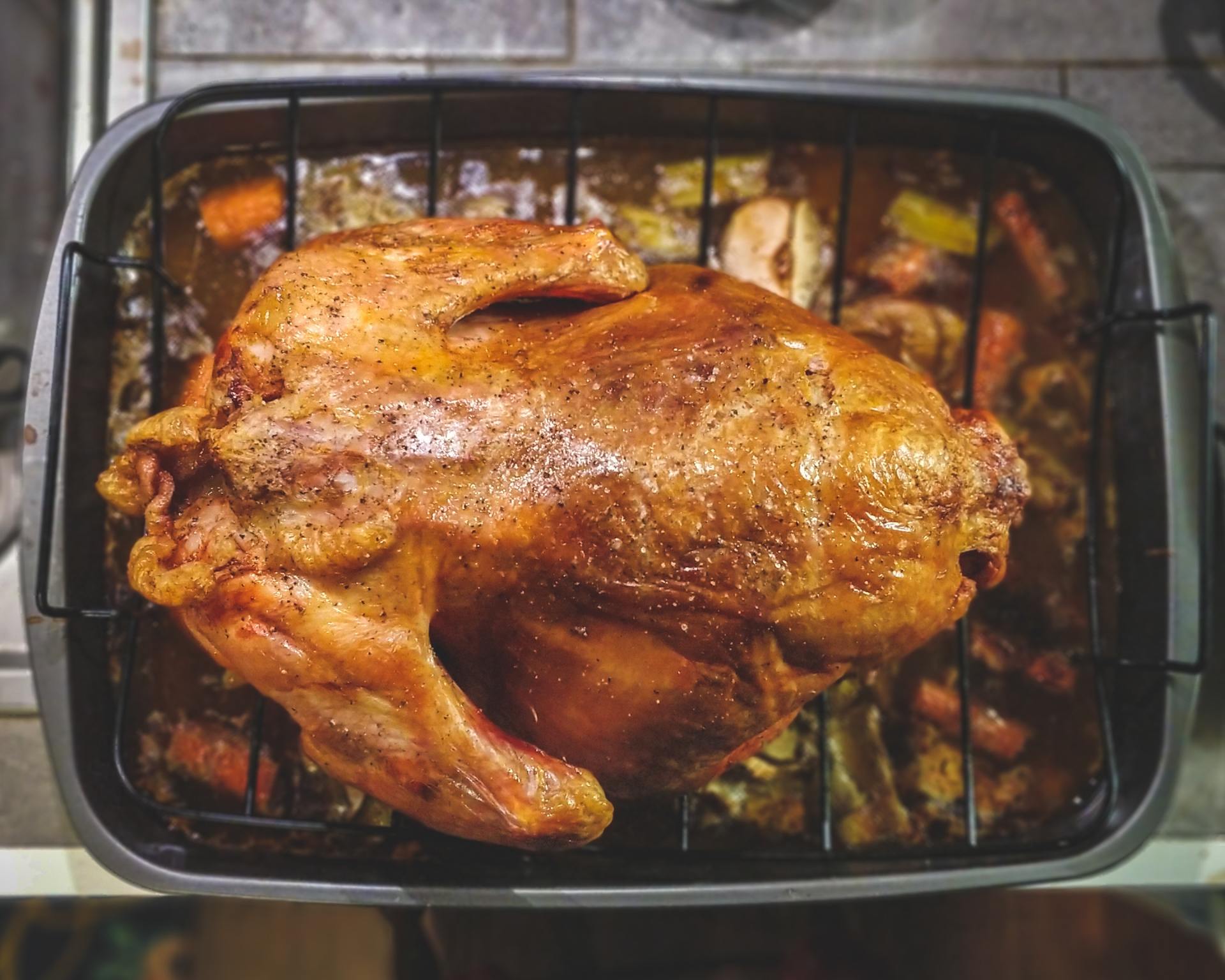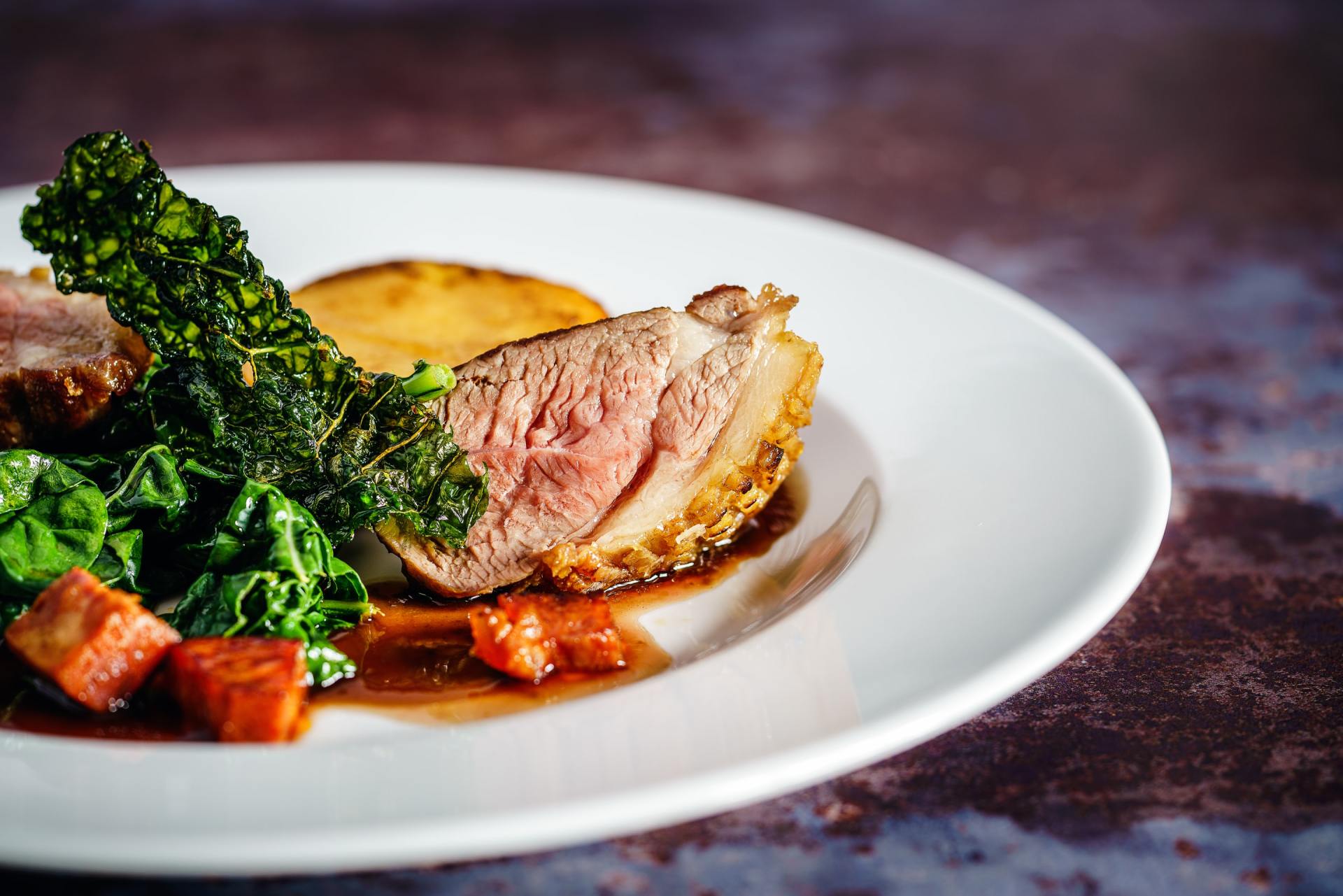Why buy British Poultry?
Chicken, Turkey, Duck and eggs
More than 40 per cent of the meat we eat in Britain is chicken – making it the nation’s favourite meat by far. It’s especially popular with families, with a third eating chicken several times a week or more.
British poultry is produced to some of the highest standards of flockmanship in the world.
All British hens are vaccinated against salmonella. Any medication that is given is done so with full veterinary medication.
British poultry travels less far from farm to shop so regardless of how carbon footprints are calculated it self-evidently has a lower carbon footprint. Choosing British means supporting British farmers whose work helps to keep the British countryside the way we want it to look.
How to tell if the poultry is British
Poultry labelled ‘British’ must come from birds born, reared and slaughtered within the UK. If you are not buying direct from a farmer you might find it helpful to look for a quality mark. These mean that all stages of the food chain have been independently checked to ensure that they meet the required standards.
What do the terms for the farming techniques actually mean?
The most important factor when buying poultry is the farming technique used to produce it.
There are a number of legal terms that indicate the type of farming used to produce poultry:
‘Extensive indoor‘ (‘Barn reared’) birds are kept inside and the maximum number of birds per m² of floor space is specified. Also specified is the earliest age at which the birds can be slaughtered.
Free range is similar to ‘extensive indoor’ farming but the birds must have access to an open-air run for at least half their lives.
Traditional free range birds are kept in portable poultry houses, which can be wheeled to fresh pastures, and the maximum number of birds per m² floor space specified is more generous. The minimum age at slaughter is also higher. These factors combine to mean that birds farmed in this way are slower-growing breeds known for having better flavour and texture.
Free range – total freedom is similar to ‘traditional free range’ except these birds have continuous day-time access to open-air with no limit to how fat the bird can range. Birds will naturally seek their barn out at dusk.
‘Fed with x % of x‘ refers to the percentage of grain, as opposed to artificial feed, the birds have been fed. It does not give any indication of the intensity of the farming technique used. The term ‘corn-fed’ is commonly used and although it is not officially recognised it is understood to mean that the feed formula given during greater part of the fattening period contains at least 50% corn/maize.
Breeds to look out for:
Hens bred for the table are known as broilers; whereas hens kept for eggs are ‘layers’. Poussin is young chicken with firm but delicate taste. One serving usually consists of an entire bird.
The Derbyshire Red is traditionally popular in Derbyshire and Yorkshire, this breed is highly thought of for its laying quality – it lays white-shelled eggs prolifically. The meat is white and has a flavour similar to game birds.
The Ixworth takes its name from the Suffolk village in which it originated, this breed thrives in free range farming systems. It has a juicy, succulent texture and its eggs’ shells have a light tint.
The Orpington is named after the village in Kent, the Orpington produces a ‘well-shaped’ table bird with a broad breast and succulent meat. The eggs are slightly small and the shells have a brown tint.

Slide title
Write your caption hereButton
Turkey
Turkey is widely available throughout the year and not just at Christmas-time. Much of this is the mild-flavoured ‘white’ turkey but other breeds to look out for are the Norfolk Black and the Cambridge Bronze.
The Norfolk Black is considered one of the Europe’s finest table turkeys, it has fine grained, richer meat with a gamy flavour. These birds have black very glossy feathers, due to the high oil content, which also ensures juicy meat. It has a smaller breast than other turkeys and some people are put off but the dark feather stumps that remain on the skin.
The Cambridge Bronze matures slowly, allowing time to develop the superior texture and flavour of the meat, of which there is more than with the Norfolk Black.
Traditional Farmfresh Turkeys can be any breed but must be produced using traditional farming methods and have a European ‘Traditional Speciality Guaranteed’ mark.
British Turkey products carrying the Quality British Turkey mark – http://www.britishturkey.co.uk/
Duck
Duck eggs are larger than hen eggs and have an oilier taste. They are becoming more widely available but availability still tends to be on a local scale.
The most common farmed duck in Britain is the Pekin, which has been crossed with the Wild Mallard to create the Gressingham duck. The Gressingham is a succulent and tender duck with a high breast meat content. It has a gamy flavour.
The best-known farmed duck is the Aylesbury duck, which hails from Buckinghamshire. The flesh is pale, soft and tender and it is less fatty than other breeds. The duck has a gamy flavour, although the gaminess is less pronounced than that of wild duck. However the breed is slower to mature than others and so tends to be only reared by smaller farmers.
The Goosnargh duck is a cross between the Pekin and the Aylesbury duck. It hails from Goosnargh, a village near Preston, Lancashire. The duck is traditionally killed young and hung for up to 48 hours to enhance the flavour.

Slide title
Write your caption hereButton
Goose
Goose has a limited season between September and December. It is traditional to eat goose on Michaelmas (29 September) and on Christmas Day. Goose eggs have a slightly oily taste and should always be used when they are very fresh. The eggs are only available in the spring as a surplus from breeding and as such sales tend to take place at the farm gate.
The indigenous British breed is the Brecon Buff, which originated in South Wales and became a recognised breed in 1934. It has a high ratio of meat to bone.
Eggs
What to think about when buying British eggs
All chicken eggs that are sold must be stamped with a code indicating the production method, country of origin (two letters) and farm (five digits), for example 1UK12345. The first number refers to the production method. As with the labels for farming techniques for table birds, the maximum ‘stocking density’ is stipulated.
0 – Organic
1 – Free range: birds are housed in a barn but have continuous daytime access to open runs that are mainly covered with vegetation.
2 – Barn: birds are housed in a barn with a series of perches and feeders at different levels.
3 – Caged: birds are housed in tiers of cages which have sloping mesh floors so that the eggs roll backwards out of the reach of the birds to await collection. Increasingly the cages are ‘enriched’ as legislation dictates that they must all be thus by 2012.
In addition, some eggs will have a quality mark and/or a best before date stamped on them. The Lion Quality mark assures the purchaser that the eggs stamped with this mark come from British hens that have been vaccinated against salmonella and have been produced to high standards of hygiene and animal welfare. The mark is stamped on the eggs and egg boxes. A best before date is also stamped on the eggs.
‘Laid in Britain‘ is a quality and food safety assurance scheme devised for independent egg producers, who pack and mark their own produce, to supply retailers and caterers on a local and regional basis. The logo appears on the eggs boxes but not on the eggs themselves.
Duck and goose eggs do not have to be stamped with the ID mark.
The Meat vs Vegan debate: Love British Food's view
British meat is one of the most sustainable forms of protein we can put on menus. Our grazing lands have hugely positive impact on carbon sequestration, biodiversity, providing habitats and food for wildlife, while utilising agricultural land unsuitable for cropping. And red meat is rich in so many of the minerals and vitamins that are an absolutely essential part of a healthy, nutritional, balanced diet.
We do believe, however, that the culture of a ‘burger a day’ or meat with every meal is not sustainable in an expanding global population; and too much meat, as with too much of anything, is not a healthy option.
Rather than encouraging people to eat less meat as many campaigns and social media posts do; we think the important thing is to encourage people to eat higher quality meat, and on a normal household budget this means eating less meat but enjoying better quality. By higher quality we mean sustainable British meat produced with high animal welfare standards and with none of the growth hormones, uncontrolled use of antibiotics and factory farmed stocking densities that define much meat produced elsewhere. Less is More: Buy British!
Don’t miss out!
Sign up to our newsletter and stay up to date with our latest news and events.
The campaign Love British Food, the national food celebrations ‘British Food Fortnight’ and their associated logos are trademarked and must not be used without the express permission of the owners, Love British Food. Companies or individuals wanting to use the logos or run promotions and activity in association with British Food Fortnight or Love British Food can work with Love British Food as a member or partner or with permission from the founder.
Love British Food

